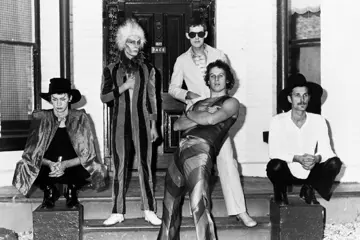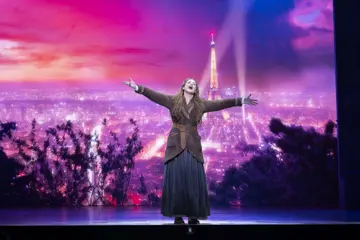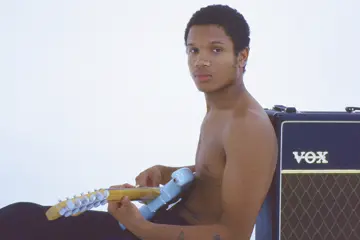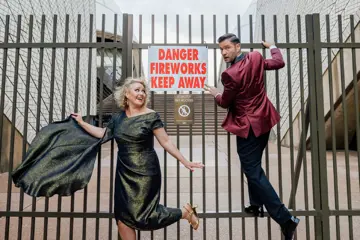The way the music industry works these days – with Spotify, Rdio and iTunes making everything immediately accessible and the shelf life of albums growing shorter and shorter – there aren't too many bands that can honestly say they pride themselves on taking their time. Melbourne experimental pop duo Children Of The Wave are one of these outfits. After wrapping up duties on their critically acclaimed debut album Carapace, the two sonic adventurers (Mark Rayner and Dan Flynn to their friends) were in no rush whatsoever to follow up. Instead, they did what they always do and spent their time collecting found sounds and embryonic ideas which, when the time was right, would eventually go into the rich, constantly simmering soup that is Children Of The Wave. Eventually, boiling point was reached, the result being second record The Exotic Sounds Of Faraway Choirs.
“It's probably taken about four years from go to whoa,” explains Rayner, a former member of experimental rock troupe Front Of Van, who found the yin to his yang in the folk-based Flynn when the duo crossed paths in 2006. “There's not just one way to go about it though. Initially it started when we were rehearsing for the live show, because prior to the first album we'd never played live before. Then the album came out and we had to learn to do it. In the rehearsal we were getting a bit bored so we'd veer off into improvised stuff, which we actually started working on. Next thing you know they became songs.”
Listening to The Exotic Sounds Of Faraway Choirs, it becomes apparent that a lot of Children Of The Wave's trademark soundscapes and atmospheres have been created using the technique of field recording. A skill popularised by the likes of former Cabaret Voltaire member Chris Watson and Andrew Bird, it involves creating musical pieces from the sounds and nuances of everyday life. As far as Rayner and his work goes, it's an ongoing process. “Lots of people take photos when they go travelling, I take recordings,” he says excitedly. “I've got a little handheld recorder, which has a built-in microphone. Some of the recordings that ended up on the album are when I've just been in a place and sitting there, hear a sound and just pull out my little recorder and get it down. I find field recording a good way of relaxing; a bit of [a] meditative process. I actually enjoy the process of capturing the field records as much as I do utilising them.”
As Rayner intimates here, the capturing process can happen at any time. Whether at home or abroad, a good field recordist needs to be on the ball at all times. Think about it – the noise you're hearing now, whether it's a busy café or the sound of your washing machine churning away, could easily be picked up and manipulated into a rhythm track for a Children Of The Wave song. Rayner knows this well, although he admits it's not always entirely obvious where these nuggets of sound gold should sit. “I just got back from Portugal where I got these really amazing recordings, but I've got no idea how to use them. There was one time, I was just sitting outside on the road and this trumpet was wafting out of a music school behind me, and in the house next to it they were doing renovations so there was all this banging away – which sounded like a really messed up percussive thing. Then after about ten minutes of recording, this gaggle of about 30 school kids walked past all with those cases on wheels. So the sound of them coming from the right channel to the left channel on this cobblestone road is just amazing. It was like, everything is happening – but how do we turn it into music?”
Don't miss a beat with our FREE daily newsletter















